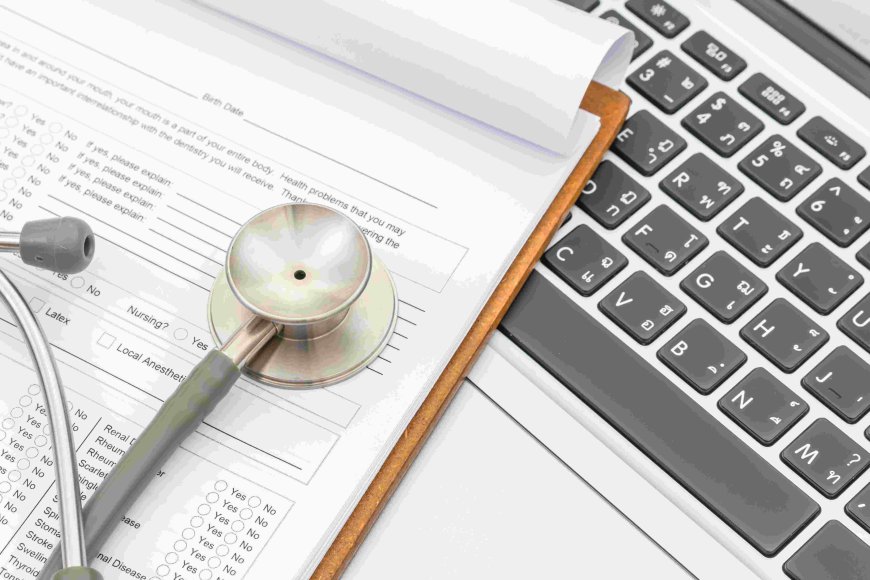Healthcare Providers Streamline Medical Billing Processes to Reduce Administrative Costs
Healthcare Providers Streamline Medical Billing Processes to Reduce Administrative Costs

Healthcare billing is often a complex and labor-intensive process. With a myriad of codes, regulations, and payer requirements, it’s easy for errors to creep in. These errors not only lead to delayed payments but can also increase administrative costs significantly.
Importance of Streamlining Billing Processes
Streamlining billing processes can help healthcare providers reduce costs and improve operational efficiency. By adopting a more organized and systematic approach, providers can ensure quicker reimbursements and a more efficient workflow Outsource Medical Billing Services.
Understanding the Current Billing Landscape
Complexity of Healthcare Billing
Healthcare billing involves a detailed and multi-step process that includes coding diagnoses, procedures, and treatments. This complexity is compounded by constantly changing regulations and payer requirements.
Common Billing Errors and Their Impacts
Errors in billing can lead to claim denials, delayed payments, and increased administrative costs. Common mistakes include incorrect coding, missed charges, and incomplete documentation.
Administrative Costs in Healthcare Billing
Administrative costs associated with billing can be substantial, including salaries for billing staff, training expenses, and costs related to claim reprocessing. Reducing these costs can significantly impact a provider’s bottom line.
The Role of Technology in Streamlining Billing
Electronic Health Records (EHR)
EHR systems help streamline the billing process by integrating patient information with billing data. This reduces the risk of errors and improves the accuracy of claims.
Automated Billing Systems
Automated billing systems can handle repetitive tasks, such as generating and submitting claims, tracking payments, and managing denials. This not only speeds up the process but also reduces the likelihood of human error.
Integration with Insurance Systems
Integrating billing systems with insurance payer systems can facilitate real-time claim submission and status tracking. This integration helps ensure that claims are processed efficiently and reduces the risk of claim denials Advance Radiology Billing Services.
Implementing Efficient Billing Practices
Standardizing Billing Procedures
Developing and implementing standardized billing procedures can reduce errors and improve efficiency. This includes creating detailed workflows and checklists for billing tasks.
Training Staff on Best Practices
Regular training for billing staff ensures they are up-to-date with the latest coding guidelines and billing practices. Well-trained staff are less likely to make errors and can handle billing tasks more efficiently.
Utilizing Data Analytics for Billing Optimization
Data analytics can provide insights into billing performance and identify areas for improvement. By analyzing billing data, providers can spot trends, identify bottlenecks, and optimize their processes.
Enhancing Communication Channels
Improving Patient Communication
Clear communication with patients regarding their financial responsibilities can reduce confusion and improve payment collections. Providing detailed explanations of charges and payment options helps patients understand their bills better.
Streamlining Provider and Payer Communication
Efficient communication between providers and payers can help resolve billing issues quickly. Using electronic systems for claim submissions and inquiries can streamline this process.
Compliance and Regulatory Considerations
Understanding Billing Regulations
Healthcare billing is subject to numerous regulations and standards, including ICD-10 codes and CPT codes. Staying informed about these regulations is crucial for ensuring compliance and avoiding penalties.
Ensuring Compliance with Legal Requirements
Compliance with legal requirements, such as HIPAA, is essential for protecting patient information and avoiding legal issues. Regular audits and updates to billing practices help ensure ongoing compliance.
Leveraging Outsourcing and Partnerships
Benefits of Outsourcing Billing Services
Outsourcing billing services can provide access to specialized expertise and advanced technology without the need for significant investment. This can lead to more accurate billing and reduced administrative costs.
Choosing the Right Billing Partner
When selecting a billing partner, consider factors such as their experience, technology capabilities, and reputation. A reliable partner can help streamline your billing process and improve overall efficiency.
Monitoring and Evaluating Billing Performance
Key Performance Indicators (KPIs) for Billing
Monitoring KPIs, such as claim denial rates and days in accounts receivable, can provide valuable insights into billing performance. Regularly reviewing these metrics helps identify areas for improvement.
Regular Audits and Reviews
Conducting regular audits of billing practices ensures that processes remain efficient and compliant with regulations. Reviews help identify any issues and implement corrective actions promptly.
Case Studies and Success Stories
Examples of Successful Billing Process Improvements
Numerous healthcare providers have successfully streamlined their billing processes, resulting in reduced costs and improved efficiency. Case studies provide valuable insights into effective strategies and best practices Mips Reporting.
Lessons Learned from Case Studies
Analyzing case studies can offer lessons on what works and what doesn’t in billing process improvements. These lessons can guide other providers in implementing similar changes.
Conclusion
Summary of Key Strategies
Streamlining billing processes involves adopting technology, implementing efficient practices, enhancing communication, ensuring compliance, and evaluating performance. By focusing on these areas, healthcare providers can reduce administrative costs and improve overall efficiency.
Future Trends in Healthcare Billing
As technology continues to evolve, healthcare billing is likely to become even more streamlined. Advances in artificial intelligence, automation, and data analytics will play a crucial role in shaping the future of billing processes.
FAQs
What are the main benefits of streamlining billing processes in healthcare?
Streamlining billing processes can lead to reduced administrative costs, fewer billing errors, faster reimbursements, and improved operational efficiency.
How can technology specifically help in reducing billing errors?
Technology, such as automated billing systems and EHR integration, helps reduce errors by automating repetitive tasks and ensuring accurate data entry.
What role does staff training play in improving billing efficiency?
Training staff on best practices and coding guidelines ensures that they handle billing tasks accurately and efficiently, reducing the likelihood of errors.
How do compliance issues affect healthcare billing?
Compliance issues can lead to legal penalties, claim denials, and increased administrative costs. Staying informed about regulations and ensuring compliance is essential for smooth billing operations.
What should healthcare providers consider when outsourcing billing services?
Providers should evaluate potential billing partners based on their experience, technology capabilities, and reputation. Choosing the right partner can enhance billing accuracy and efficiency.

 qppmips
qppmips